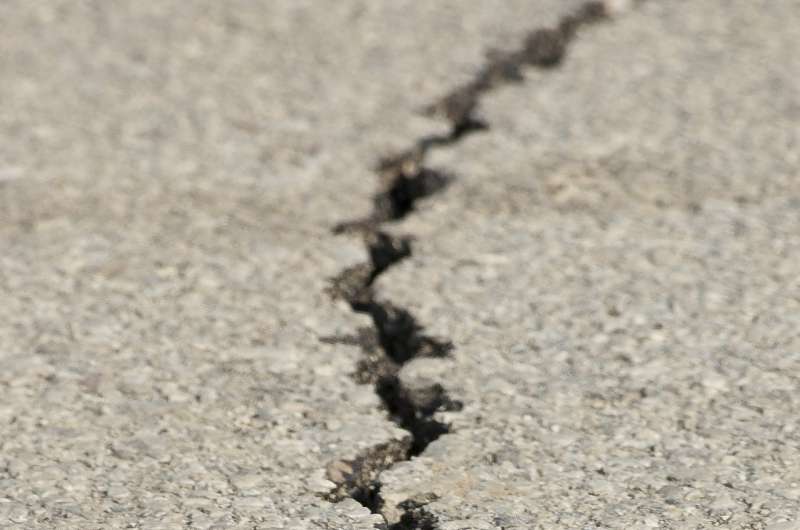This article has been reviewed according to Science X's editorial process and policies. Editors have highlighted the following attributes while ensuring the content's credibility:
fact-checked
reputable news agency
proofread
A small earthquake and 'Moodus Noises' are nothing new for one Connecticut town

Donna Lindstrom was lying in bed and looking at her phone Wednesday morning when she heard a loud bang that rattled her 19th-century house in the central Connecticut town of East Hampton.
Soon, the 66-year-old retired delivery driver and dozens of other town residents were on social media, discussing the latest occurrence of strange explosive sounds and rumblings known for hundreds of years as the "Moodus Noises."
"It was like a sonic boom," Lindstrom said. "It was a real short jolt and loud. It felt deep, deep, deep."
It was indeed a tiny earthquake with a magnitude of 1.7, according to the U.S. Geological Survey.
Robert Thorson, an earth sciences professor at the University of Connecticut, said booms, rumblings and rattling have been recorded in the East Hampton area, including the nearby village of Moodus, for centuries, dating back well before a larger earthquake, recorded on May 16, 1791, knocked down stone walls and chimneys.
In fact, Moodus is short for "Machimoodus" or "Mackimoodus," which means "place of bad noises" in the Algonquian dialects once spoken in the area. A local high school has even nicknamed their teams "The Noises," in honor of that history.
The occurrences were frequent enough that the federal government, worried about the possible effect of seismic activity on the nearby, now-decommissioned Haddam Neck Nuclear Power Plant, conducted a study of the "Moodus Noises" in the late 1980s, Thorson said.
What they found was that the noises were the result of small but unusually shallow seismic displacements within an unusually strong and brittle crust, where the sound is amplified by rock fractures and topography, he said.
"There is something about Moodus that is tectonic that is creating these noises there," Thorson said. "And then there is something acoustic that is amplifying or modifying the noises and we don't really have a good answer for the cause of either."
Thorson said there could be a series of underground fractures or hollows in the area that help amplify the sounds made by pressure on the crust.
"That's going to create crunching noises," he said. "You know what this is like when you hear ice cubes break."
It doesn't mean the area is in danger of a big quake, he said.
"Rift faults that we used to have here (millions of years ago) are gone," he said. "We replaced that with a compressional stress."
That stress, he said, has led to the crunching and occasional bangs and small quakes associated with the "Moodus Noises."
"It's just something we all have to live with," said Lindstrom. "I'm just glad I don't live in California."
© 2024 The Associated Press. All rights reserved. This material may not be published, broadcast, rewritten or redistributed without permission.





















